How to calculate the radiator for a room: the technology of
Know how to calculate the number of radiators per room, you need not only professionals in the field of design of heating systems. Even a simple replacement of batteries in the house is impossible without accurate calculation and selection of sufficiently effective devices, so that the information outlined below will be required for each of us.
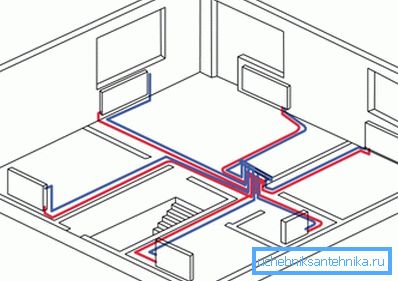
Why do we need an exact calculation?
The instructions for calculating the exact parameters of heating devices given in this article are very useful:
- First, the comfort in our house depends on the power of heating. If we install too weak radiators, then in the cold season they will not be able to cope with the increasing load, and therefore the parameters of the microclimate will be far from optimal.

- Secondly, the price of a high-quality radiator is very high, and therefore it is not necessary to overpay for the installation of unnecessary structures either. Knowing how to calculate the number of radiators per room, we will be able to reduce our costs by buying exactly as many batteries as we need.
- Finally, a preliminary miscalculation will allow us to plan our costs at the planning stage. Knowing how much heat will be required for space heating, we will be able to choose the appropriate type of heating system, starting from the boiler and ending with the material from which the battery sections in the house will be made.
Power calculation technology
Simple technique
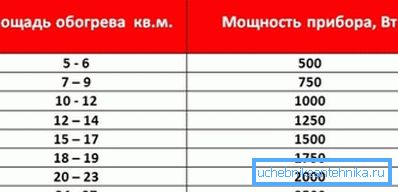
There are several answers to the question of how to calculate how many radiators are needed per room. In the table below we present the data that should be used for approximate calculations:
| Room characteristics | Thermal power per 1m2, W |
| A room with one window, one external wall and a ceiling height of not more than 2.5 - 2.7 m. | 100 |
| A room with one window, two external walls and ceilings up to 3 m high. | 120 |
| Room with two windows, two exterior walls and ceilings of standard height. | 130 |
Next, the area of the room is multiplied by the value selected from the table, and the resulting number is divided by the heat transfer of the required radiator model (in W). The result is rounded up to an integer value.
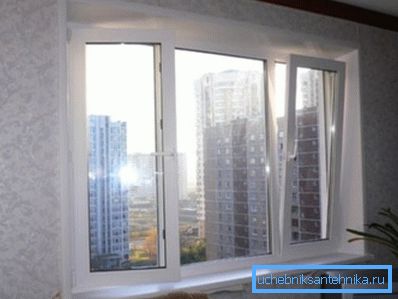
Tip! Rounding is necessary, because the power reserve will not be exactly redundant, but the drawback will have to be compensated for at a great additional cost.
Bole exact way
There is another solution to the problem of how to calculate the power of the radiator on the room with your own hands.
To do this, we need to calculate the volume of the room:
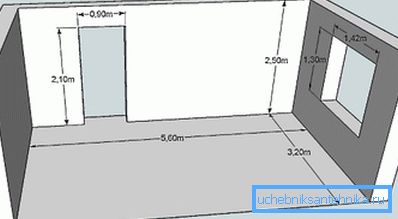
- The area of the room is multiplied by its height, getting the desired value in cubic meters.
- The volume is multiplied by the normative coefficient, which for the European part of the Russian Federation is equal to 41 W.
- Next, we proceed as in the previous case: divide the resulting value by the heat output of the section or panel radiator, and then round the result up.
As you can see, the method is not much more complicated than the previous one. However, it can be used to accurately calculate how much heat a room consumes, and how many batteries are needed to heat it.
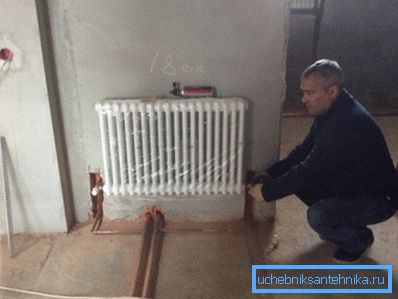
Calculation example
In this section, we will use a simple example to demonstrate how to calculate the power of a heating radiator per room:
- So, let's say we have a room 5m long, 4m wide, with a ceiling height of 2.7m.
- Calculate the volume: 5 x 4 x 2.7 = 54m3.
- Next, we calculate how much heat is required for efficient heating: 54 x 41 = 2214 W.
- Then choose the model of the heater. We will perform the calculation for the bimetallic design of the Sira RS500 with a heat output of one section equal to 199 watts.

Note! Before calculating steel radiators for a room, you need to carefully study the product passport. Very often, for such devices, heat transfer is indicated for the entire panel, while for cast-iron, aluminum and bimetallic structures, section calculation is more often used.
- The need for heat divided by the heat transfer section: 2214/199 = 11.1. In order to get a reserve of power, we will round up to 12 - that’s how many battery edges we need to install in order to provide a comfortable microclimate in the room.
dimensions
The question of how to calculate the size of the radiator for a room is also very important.
As a rule, installing one large device is less expensive than two smaller products, but there are certain limitations associated with the dimensions of the walls:
- So, do not install the battery close to the floor. The minimum clearance should be about 80 - 120 mm.
- Distance from the bottom edge of the sill is also important.. This value should not be less than 60 - 120 mm, otherwise the heat will simply not flow to the window, and condensate will collect on the glass.
- There are restrictions on the width. If the radiator is mounted inside the window sill niche, then at least 150 mm free space should be left on the sides.
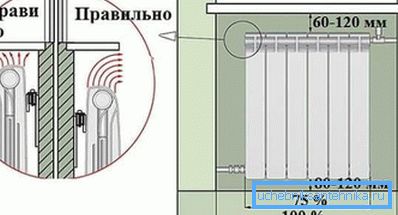
Note! The optimal width of the heating panel is from 50 to 75% of the width of the window opening.
Guided by this data, you can easily calculate the maximum value of the product that can be set at your chosen point.
Conclusion
Information on how to calculate the number of radiator sections per room is needed by each of us, especially if in the foreseeable future we plan to arrange or reconstruct the heating system. To get acquainted with the methods used in more detail, we recommend that you view the video in this article.